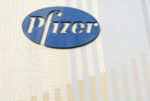Group captive specialist Captive Resources has seen more small and mid-sized businesses looking to medical stop-loss group captives in response to rising healthcare costs
As healthcare costs continue to rise, many companies have turned to self-funding their employer-sponsored health insurance.
For small and mid-size businesses that lack the scale to go it alone, medical stop-loss group captives have emerged as a viable risk management strategy that enables companies to control spending while still delivering exceptional coverage for their employees.
State of the health benefits market
Healthcare costs have grown at a rapid rate over the past 20 years. Since 2003, family premium costs for mid-size companies have increased by over 170%, according to data from independent source for health policy research, the Kaiser Family Foundation (KFF).
And this escalation is likely to continue. According to a report from the Centers for Medicare & Medicaid Services (CMS), the annual growth in national health spending is expected to average 5.1% through 2030 and reach nearly $6.8 trillion.
Several factors are driving these cost increases – including the prevalence of chronic diseases, an ageing population, rising drug prices, and escalating healthcare service and administrative costs.
These rising costs have spawned – or at the very least propelled – an increasingly volatile market with unpredictable price hikes.
These conditions often leave employers in the unenviable position of choosing between charging employees more for coverage, making difficult cuts to that coverage, or assuming more of the cost themselves.
The transition to self-funding
In response to rising costs, an increasing number of companies are moving away from fully funded programmes in favour of self-funding their health benefit plans.
In 2009, 47% of mid-sized companies self-funded their employee benefit healthcare coverage.
A decade and a half later, 61% of those companies are now self-funded, according to the KFF.
- Stop-loss coverage: According to the US Department of Labor, the vast majority of self-funded plans – other than those of very large employers – have some stop-loss coverage to protect against catastrophic claims. Stop-loss coverage allows employers to retain more predictable risk while transferring catastrophic losses to an insurer. Larger employers may be able to leverage this option independently; however, small and mid-size companies often lack the necessary scale.
- Medical stop-loss group captives: Medical stop-loss group captives allow several employers to join together to establish a self-funded programme where each company retains a layer of risk up to a specific deductible.
In a traditional stop-loss programme, all losses above this deductible are transferred to a carrier. Adding a captive overlay means that a fronting carrier will assume a layer of risk above each employer’s specific deductible.
The captive layer is covered by members using different funding mechanisms and includes a provision for risk-sharing.
Medical stop-loss group captives benefits
Reviewing the benefits of medical stoploss captives illustrates how they can help employers address the rising cost of healthcare while still allowing the provision of high-quality coverage for their employees and their families. (The following is based on the medical stop-loss group captives advised by Captive Resources, and individual programme details may vary).
- Increased control and flexibility: In a medical stop-loss group captive, the member-insureds are also the owners of the company, which affords them greater control over programme structure and costs. For example, when an employer joins a group captive, it can select a stop-loss deductible that best fits its needs – the higher the stop-loss deductible (ie the more risk retained), the lower the premium. Members are underwritten individually instead of as part of a pool, and renewals are based on each member-company’s known performance. This provides added predictability and stability, particularly at renewal. Members also enjoy significant flexibility when structuring their health benefits programme. In a medical stop-loss group captive, each member company can determine various components to fit its unique needs, including:
- choice of specific stop-loss deductible levels and aggregate coverage options;
- co-pays as well as out-of-pocket maximums;
- third-party admins and network.
- Dividend potential: In fully funded programmes (and many traditional stop-loss plans), the insurer retains any underwriting profit. In a medical stop-loss group captive, when a member-owner’s excess losses are less than projected, it can recoup those dollars in the form of dividends, plus accrued investment income. So, rather than paying premiums as a fixed cost, group captive members can be rewarded for controlling their spending. Dividends represent an excellent example of how different programmes function. Depending on how the group captive is structured, dividends could be determined more by individual member performance (the risk/reward approach) or by the collective performance of the captive (a pooled approach). Both formats offer members the opportunity to earn dividends; employers select which is most suitable for them based on their risk appetite.
- Transparency and access to data analytics: Group captive member-owners gain greater access to their individual data, which ultimately gives them a deeper understanding of programme performance. Data insights allow employers to monitor claim trends, identify specific cost drivers, and access a wealth of aggregate and individual performance data. Members and the captive programmes can use these learnings to implement targeted cost-containment initiatives.
- Collaboration with fellow members: Perhaps the most underrated benefit of a medical stop-loss group captive is the knowledge-sharing and collaboration among members. Member-companies take advantage of multiple opportunities (board meetings, workshops, webinars, and so on) to share what has and hasn’t worked within their organisations to help improve their programme performance, which in turn can positively impact the overall performance of the captive.
Striving for a healthier workforce
Medical stop-loss group captives are not just about saving money. When done correctly, they can be a force for building a more holistic health benefits programme, improving care for employees, and taking a more proactive approach to health and wellness by including health risk management services and support.
Medical stop-loss group captives bring resources, tools and data to captive members to help them identify health risks among plan members and isolate cost drivers.
Reducing costs is obviously critically important to members, but just as vital is how the cumulative actions that fall under the health risk management umbrella can help improve plan participants’ overall health and well-being.
The scope of health risk management includes a wide array of initiatives available to group captive members.
Each member can develop and implement an overarching plan that best fits the needs and culture of its organisation, which means the specific strategies can vary significantly from member to member.
What kind of companies are a good fit for group captives?
In much the same way that there isn’t a singular, all-encompassing model that works for every company, not every organisation is a good fit for a medical stop-loss captive. Since group captive members swim in a relatively small risk pool, selectivity is essential for the overall health of the captive.
Companies looking to join a group captive should be comfortable making the transition from passive policyholders to active owners of a reinsurance company.
There are options to suit an array of employers. The vital thing for employers is finding the right model. Here are a few questions for employers to consider:
- Is your firm self-funded or looking to transition from the fully funded market? Self-funded employers have access to additional data that can simplify the transition to a group captive; however, employers in fully funded plans are still eligible for captive membership.
- Is your firm comfortable assuming more risk for the opportunity to be rewarded or would you prefer to pool that risk with other employers? If your company falls into the former category, a risk/reward model where individual performance plays a more prominent role in determining dividends may be most suitable; if you fall into the latter, a pooled approach with more emphasis on the captive’s overall performance is likely the better option. Employers should work with their broker or consultant and a trusted captive advisor to find the model that can meet their firm’s unique needs and culture.






